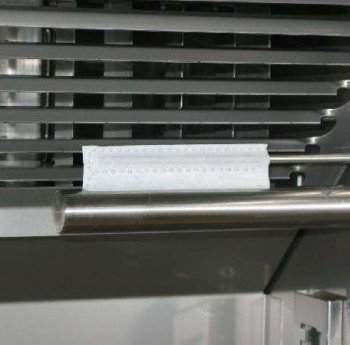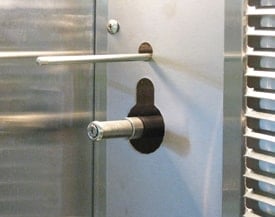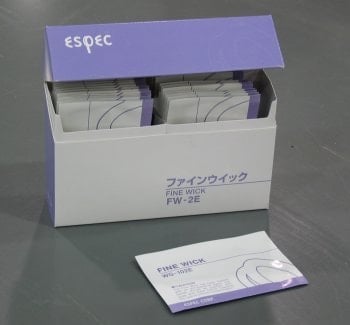Humidity Measurement: Analog versus Digital
There are two different systems for measuring humidity in environmental test chambers. One is analog, the other digital. But which is really better? Lets look at the pluses and minuses of each.
 Analog method: wet bulb/dry bulb
Analog method: wet bulb/dry bulb
A dry bulb is simply a dry thermocouple in the air (the word bulb refers to a thermometer bulb). A wet bulb is a thermocouple with a fabric “sock” or “wick” that is kept wet by hanging the end in a small tank of water. When the wet and dry bulbs are placed in the air-stream of the chamber, the wet bulb is colder because the water on it is constantly evaporating. The chamber controller compares the temperatures of the two thermocouples and calculates the relative humidity. It is a fundamental measurement method because it is a direct application of thermodynamic principles.
Wet-bulb Pluses:
- Reliable, simple technology
- Easy to maintain
- No calibration required
- Easy to determine if malfunctioning (starts reading 100%)
- Only two typical failure modes: wick needs changing or water supply is gone
- Wicks are cheap to replace
Wet-bulb Minuses:
- Need to change wick regularly
- Not suitable for temperatures below 3°C or above 95°C
 Digital method: solid-state sensor
Digital method: solid-state sensor
As the name implies, the solid-state sensor is electronic. The sensor measures the electrical capacitance of a special material as it changes with the humidity. It has its own processor to interpret the capacitance change and then outputs a humidity value to the chamber controller. It is considered a secondary measurement method because it is based on the observed properties of the sensor material.
Solid-state Pluses:
- No wick to change
- Can read humidity below freezing and above boiling (although normal chambers can’t control at these conditions)
Solid-state Minuses:
- Malfunction (loss of calibration) cannot be detected easily
- Can be damaged by extreme temperatures
- Can be damaged (temporary or permanent) by condensation (when operated near 100% RH)
- Needs regular calibration (every 6 months)
- Requires specialized equipment for proper calibration and adjustment
- Accuracy varies depending on temperature
- Expensive to replace
Which to choose?
For the end-user, one of the primary interests is maintenance. Oftentimes a solid-state system sounds easier because you don’t have to worry about changing the wick. But instead you are adding an additional device that needs to be calibrated and maintained. Today, most chamber companies use solid-state sensors as standard, primarily because they are simpler to install and allow use of less-sophisticated controllers.
 ESPEC uses wet/dry bulb on our standard chambers because it is more reliable and easy to maintain. ESPEC does offer solid-state systems where extreme conditions need to be measured, or if the wick location would be hard to get to.
ESPEC uses wet/dry bulb on our standard chambers because it is more reliable and easy to maintain. ESPEC does offer solid-state systems where extreme conditions need to be measured, or if the wick location would be hard to get to.
We have perfected our wet-bulb system. We have wicks made especially for use with our chambers to provide long service and even ‘wetting’ because they are wide and flat. And we use only the most accurate humidity calculation method, not commonly available on other chamber controllers.





 Find our Products by Region:
Find our Products by Region: